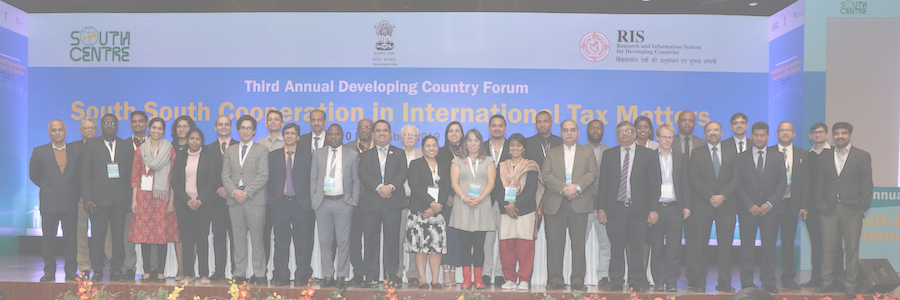Highlights of the Lima Decision on the Durban Platform
The COP 20 in Lima adopted a Decision on the Durban Platform, which is the track for negotiating the new agreement in Paris in 2015. Below is an analysis of this key decision.
By Meena Raman
Some of the key points in the ‘Lima call for climate action’ (the decision of 14 December 2014 relating to the Durban Platform) are set out below, together with comparisons to what was in earlier drafts of the issues in the Co-Chairs’ texts of 12 December (and in some cases the drafts of 8 and 11 Dec.). Comments are also provided to provide an understanding of the changes that came about and their significance.
Preamble 1 states: “Reiterating that the work of the ADP shall be under the Convention and guided by its principles…”. This paragraph refers to the principles of the Convention explicitly; this is important for developing countries which point out that among the principles are equity and CBDR.
Preamble 4 states: “Affirming its determination to strengthen adaptation action…” (through the 2015 agreement). This reference to adaptation in the new agreement was insisted on by developing countries as the Co-Chairs’ earlier drafts did not have this reference. This was a major concern of developing countries which saw the developed countries pushing for a mitigation-centric agreement, with the issues of adaptation and the means of implementation being marginalised or omitted.
Preamble 5 states: “Recalling decisions 2/CP.19 and X/CP.20 (Warsaw International Mechanism for Loss and Damage associated with Climate Change Impacts) and welcoming the progress made in Lima, Peru, towards the implementation of the Warsaw International Mechanism for Loss and Damage associated with Climate Change Impacts.” The earlier drafts had no mention of loss and damage. Developing countries had been calling for ‘loss and damage’ to be part of the 2015 agreement, while developed countries have resisted this. The LDC Group made an appeal to include this issue in the final text. At the final plenary session, Tuvalu, speaking for the Least Developed Countries (LDCs), made an interpretative statement that the reference to the Mechanism for Loss and Damage in the preamble and the term “inter alia” in paragraph 2 of the decision made clear the intention that the legal outcome to be adopted in Paris will properly, effectively and progressively address loss and damage.
Paragraph 3 reads: “Underscores its commitment to reaching an ambitious agreement in 2015 that reflects the principle of common but differentiated responsibilities and respective capabilities, in light of different national circumstances”. The mention of CBDR and especially the reference that it be reflected in the 2015 agreement was seen by most developing countries as a major victory, although some countries were not pleased with the accompanying phrase “in light of different national circumstances.” At the final plenary, the LMDC (represented by Malaysia) stated that this “clear provision in the operational part of the text and this read together with the preambular paragraph which requires the work of the Durban Platform to be guided by the principles of the Convention, together suggests to us cumulatively that the CBDR principle has been restored and it has been given its rightful place in the context of the Convention and the work that we are going to continue” in relation to the new agreement.
Paragraph 4 “Urges developed country Parties to provide and mobilize enhanced financial support to developing country Parties for ambitious mitigation and adaptation actions, especially to Parties that are particularly vulnerable to the adverse effects of climate change; and recognizes complementary support by other Parties”. The 12 December draft, instead of “…and recognises complementary support by other Parties” had the following language: “and invites other Parties willing to do so to complement such support”; while an earlier 11 December draft had the following words: “developed country Parties and other Parties in a position to do so…” These words in the earlier drafts were seen by many developing countries as diluting the CBDR principle, with developing countries also having to contribute to financing mitigation and adaptation actions, contrary to the provisions of the Convention.
Paragraph 9 “Reiterates its invitation to each Party to communicate to the secretariat its INDC towards achieving the objective of the Convention as set out in its Article 2.”
The Dec. 11 version of the draft text in Option 3, provided that “Parties’ INDCs …will include a mitigation contribution, and may also include contributions on adaptation, finance, technology development and transfer and capacity-building and that the INDC of each Party will represent a progression beyond the current undertaking of that Party.” The concern expressed by many developing countries over this option was that all Parties had to provide a mitigation contribution which was mandatory, while contributions to the other elements are not so. This signalled a mitigation-centric approach which also did not differentiate between developed and developing countries and did not make it obligatory for developed countries to forward a finance and technology transfer contribution. The formulation that was finally agreed to leaves the scope of the INDC open, without a particular stress on mitigation.
In fact, the 8 Dec. draft states that “Parties that are not ready to communicate their INDCs by the first quarter of 2015” were invited to do so “by 31 May 2015 or as soon as possible thereafter.”
The 8 Dec. draft also provided that “each party shall communicate a quantifiable mitigation component in its INDC which represents the highest level of mitigation ambition, beyond its 2020 commitment and actions….guided by the principles of equity and CBDR-RC, in the light of evolving national circumstances.”
Many developing countries, especially the LMDC and the African Group, took issue with the term “evolving national circumstances” which they said was not a term recognised by the Convention and its use amounted to a redefining of the CBDR principle, which prejudices the negotiations in Paris.
Paragraph 10 states: “Agrees that each Party’s INDC towards achieving the objective of the Convention as set out in its Article 2 will represent a progression beyond the current undertaking of that Party”. This paragraph is to reflect the call by many developing countries to ensure that developed countries do not backslide on their commitments in the post 2020 time-frame.
Paragraph 12 states: “Invites all Parties to consider communicating their undertakings in adaptation planning or consider including an adaptation component in their INDCs”. This paragraph reflects the call by many developing countries that their INDCs could also be or include a contribution to adaptation actions, and that INDCS should not solely be about mitigation.
Paragraph 13 “Reiterates its invitation to all Parties to communicate their INDCs well in advance of COP 20 (by the first quarter of 2015 by those Parties ready to do so) in a manner that facilitates the clarity, transparency and understanding of the INDCs”.
Paragraph 14 states: “Agrees that the information to be provided by Parties communicating their INDCs, in order to facilitate clarity, transparency and understanding, may include, as appropriate, inter alia, quantifiable information on the reference point (including, as appropriate, a base year), time frames and/or periods for implementation, scope and coverage, planning processes, assumptions and methodological approaches including those for estimating and accounting for anthropogenic greenhouse gas emissions and, as appropriate, removals, and how the Party considers that its INDC is fair and ambitious, in light of its national circumstances, and how it contributes towards achieving the objective of the Convention as set out in its Article 2.”
This paragraph relates to the information that is to accompany the INDCs. Given the use of the terms “as appropriate,” Parties can decide what information will accompany their INDCs. Concerns were raised by developing countries that the earlier draft texts did not reflect the CBDR principle as to how the information to be supplied by developed and developing countries should be differentiated. Although CBDR is not mentioned in this paragraph, its mention in paragraph 3 is taken by these countries to thus cover paragraph 6 as well.
Paragraph 16 “Requests the secretariat to: (a) Publish on the UNFCCC website the INDCs as communicated; (b) Prepare by 1 November 2015 a synthesis report on the aggregate effect of the INDCs communicated by Parties by 1 October 2015.”
Other than the preparation of a synthesis report by the secretariat on the aggregate effect of the INDCs, there is no mention in the final text that relates to ex-ante assessment or review of the INDCs prior to the Paris agreement.
The earlier draft of 8 Dec. made provision for the following “ex-ante” processes (in an apparent accelerated rate) to take place in 2015 after the communication of the INDCs as follows: To provide opportunities for seeking clarification on the INDCs; for Parties to submit questions to each other and for responses to be supplied within 4 weeks; for a workshop in June next year and at COP 21 for clarity, transparency and understanding of the INDCs communicated; for a technical paper by the secretariat on the existing methodologies relating to land-use and use of market mechanisms; organise a workshop on methodologies in June 2015; technical paper by the secretariat on the aggregate effect of the INDCs; for observers to publicise their analyses of the INDCs on the UNFCCC website.
Developing countries, led by the LMDC, were of the view that these matters were outside the scope of the Warsaw mandate and could prejudice the negotiations for the Paris agreement and were also imbalanced since there was no similar ex-ante process (or even information) on the financial contributions that developed countries would make to support developing countries.
The decision also has other paragraphs on the issue of pre-2020 climate actions.












